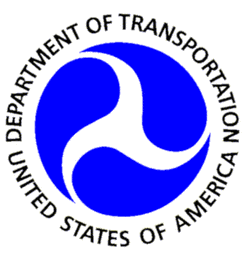Tue, Oct 29, 2013
Largest Such Fine Assessed Against An Airline Since Delay Rule Went Into Effect
The U. S. Department of Transportation (DOT) has fined United Airlines $1.1 million for lengthy tarmac delays that took place at Chicago-O’Hare International Airport on July 13, 2012. The airline was ordered to cease and desist from future violations of the tarmac-delay rule.

This is the largest fine assessed for a tarmac-delay violation since the rule limiting long tarmac delays first took effect in April 2010. Of the $1.1 million, United will pay the United States $475,000; the remainder covers mitigation measures for affected passengers and significant corrective actions by United to enhance future compliance with tarmac delay requirements.
“It is unacceptable for passengers to be stranded in planes on the tarmac for hours on end,” said U.S. Transportation Secretary Anthony Foxx. “We will continue to require airlines to adopt workable plans to protect passengers from lengthy tarmac delays and carry out these plans when necessary.”
United is being fined for 13 lengthy tarmac delays that took place on a day when severe thunderstorms and lightning caused several ramp closures and disrupted the movement of aircraft at O’Hare. Delays by United and its United Express code-share affiliates exceeded the three-hour limit for tarmac delays by as little as two minutes and as much as 77 minutes. Although United had a contingency plan for tarmac delays, DOT’s Aviation Enforcement Office found that the airline did not implement the plan during these delays, and that the plan was inadequate to cover foreseeable weather emergencies in which there were more planes on the ground than space at gates. The Enforcement Office also found that United did not contact airport personnel or other airlines for assistance during the tarmac delays. Additionally, on two United Express flights, the lavatories were inoperable during part of the delays.

Under DOT rules, U.S. airlines operating aircraft with 30 or more passenger seats are prohibited from allowing their domestic flights to remain on the tarmac for more than three hours at U.S. airports without giving passengers an opportunity to leave the plane. Exceptions to the time limits are allowed only for safety, security or air traffic control-related reasons. The rules also require airlines to provide adequate food and water, ensure that lavatories are working and, if necessary, provide medical attention to passengers during long tarmac delays.
More News
During The Forced Landing, The Airplane’s Float Struts And Spreaderbars Collapsed Analysis: While en route to a remote fishing lodge in a float-equipped airplane, one of the >[...]
"X-59 is a symbol of American ingenuity. The American spirit knows no bounds. It's part of our DNA – the desire to go farther, faster, and even quieter than anyone has ever g>[...]
Aero Linx: The Honourable Company of Air Pilots The advancement of the public interest by the promotion of safety for all those who are employed in connection with or who travel by>[...]
Minimum Friction Level The friction level specified in AC 150/5320-12, Measurement, Construction, and Maintenance of Skid Resistant Airport Pavement Surfaces, that represents the m>[...]
Aero Linx: Aerospace Industries Association (AIA) For over 100 years, the American aerospace and defense industry has shaped the world around us. From the first flight to the moon >[...]
 NTSB Final Report: Dehavilland DHC-2 MK 1
NTSB Final Report: Dehavilland DHC-2 MK 1 Aero-News: Quote of the Day (10.29.25)
Aero-News: Quote of the Day (10.29.25) ANN's Daily Aero-Linx (10.29.25)
ANN's Daily Aero-Linx (10.29.25) ANN's Daily Aero-Term (10.30.25): Minimum Friction Level
ANN's Daily Aero-Term (10.30.25): Minimum Friction Level ANN's Daily Aero-Linx (10.30.25)
ANN's Daily Aero-Linx (10.30.25)




